Humans have bred cats for their hunting skills, companionship, and striking looks for thousands of years, resulting in roughly 100 recognized breeds around the world—and even more unofficial mixes. With this many unique breeds to choose from, there’s a cat for just about everyone.
While each cat is unique, there are some traits pet parents prefer. Of the 500 pet parents we surveyed, 50% agreed that appearance was the most important. The second trait was temperament and personality (31%).
When digging deeper into temperament and personality, we found that cuddliness was the most desired trait (77%), followed by playfulness (61%) and friendliness or sociability (52%).
Unsurprisingly, the movement among our cat breed ranks this year reflected these desired traits, with the Abyssinian cat moving up three places to enter the top 15 for the first time.
For the full list of the most popular cat breeds, we dug into millions of pets in Rover’s Canadian database and uncovered the top cat breeds of 2025.
1. Domestic Shorthair (-)
Not to be confused with the American Shorthair, the Domestic Shorthair is often considered to be the “mutt” of cat breeds due to their mixed and unknown heritages. Because of this, Domestic Shorthairs can present a variety of physical attributes, but they are generally medium-sized with round faces, sleek and soft short coats, and can be any mix of colours.
It’s believed that after being domesticated in Egypt in around 2000 BC, cats like the Domestic Shorthair made their way around the globe, including to North America (likely aboard the Mayflower and other ships). These cats were favoured as mousers, hunting rodents, and other small pests, and were considered to be hard-working. Domestic Shorthair cats live an average of 12-14 years but have been known to live much longer as well.
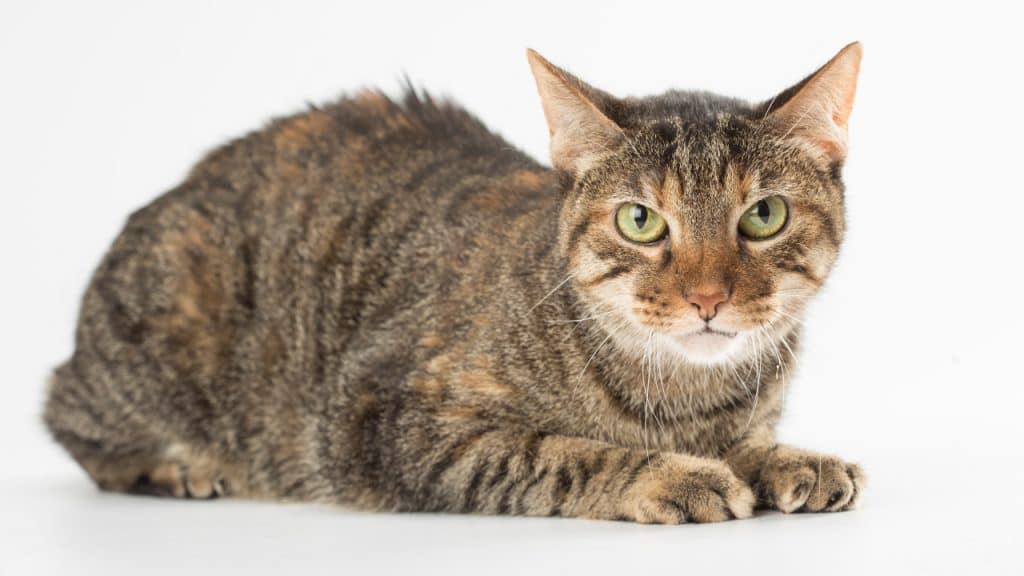
2. American Shorthair (-)
Though American Shorthair cats would love to snuggle up on a couch with you, they’re also known as working cats: hearty, muscular, and alert. They typically adapt well to humans and animals alike and are generally well-rounded in temperament.
All cat personalities are different, but an American Shorthair is likely to be sociable while still independent. These cats are selectively bred for specific traits that must meet the breed standard, unlike the Domestic Shorthair, which is a mix of unknown breeds.
Similar to the Domestic Shorthair, American Shorthair cats came to North America from Europe and were often used by pilgrims to keep the local rodent population under control.
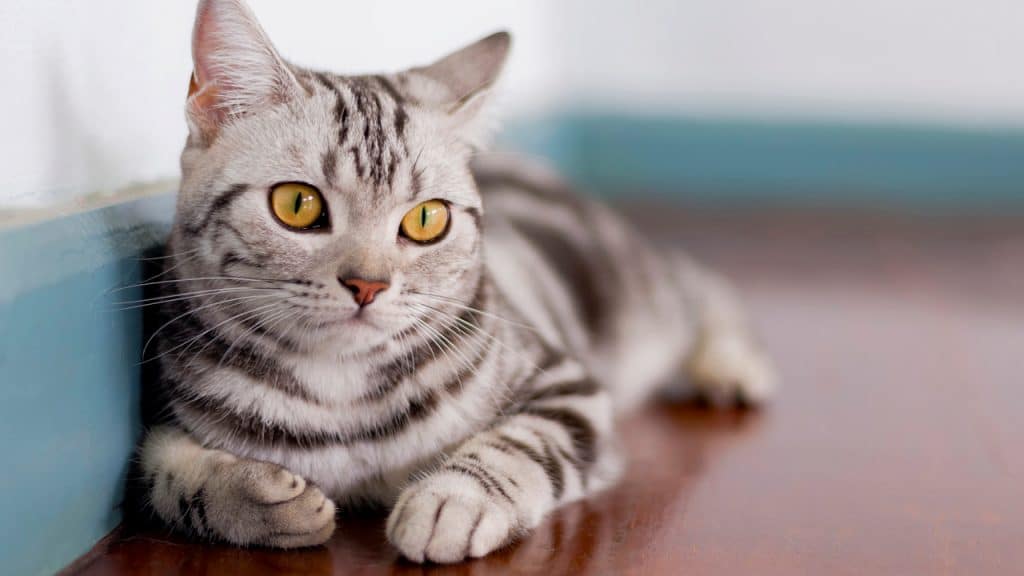
3. Domestic Longhair (-)
Like Domestic Shorthair cats, Domestic Longhair cats are simply cats that have long hair and are of unknown ancestry. They’re especially common for this reason—most cats aren’t purebreds! Also, like their shorthaired friends, they were brought to North America from Europe via ships.
These cats come in a full spectrum of colours, from orange to white and black to grey. Their coat is typically a few inches long, and they have distinct tufts around their ears and on the bottoms of their paws. Domestic Longhair cats benefit from regular grooming to help maintain their lovely coats.
Their exact history is a mystery, but some speculate that the recessive gene for long hair was pruned specifically by people with cats in colder climates like Russia, Iran, and Turkey. Domestic Longhair cats have a reputation for being great hunters, making them particularly attractive to humans looking for help controlling rodents.
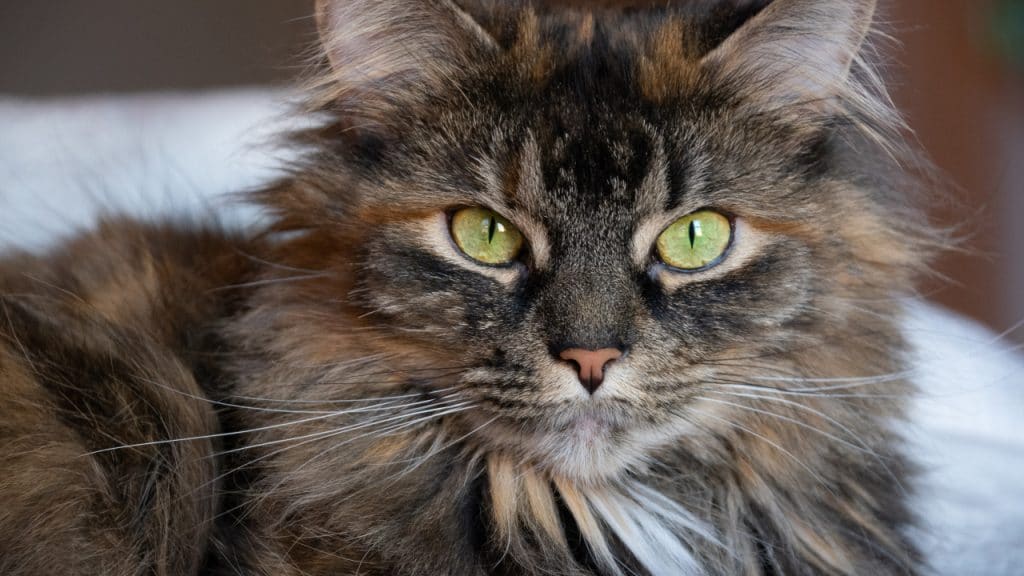
4. Ragdoll (-)
Large and fluffy, Ragdoll cats are a pointed breed. Cats of pointed breeds have lighter-coloured bodies with darker faces, legs, tails, and ears. While their colouring can vary slightly, their blue eyes are distinctive.
One of the more affectionate breeds, Ragdolls will often follow their humans around, greet them at the door, and hope for a spot in bed. They’re known for being easy-going and not excessively active.
Ragdolls were largely free-roaming cats until the 1960s, when Ann Baker, a breeder in California, developed what we know to be today’s Ragdolls.
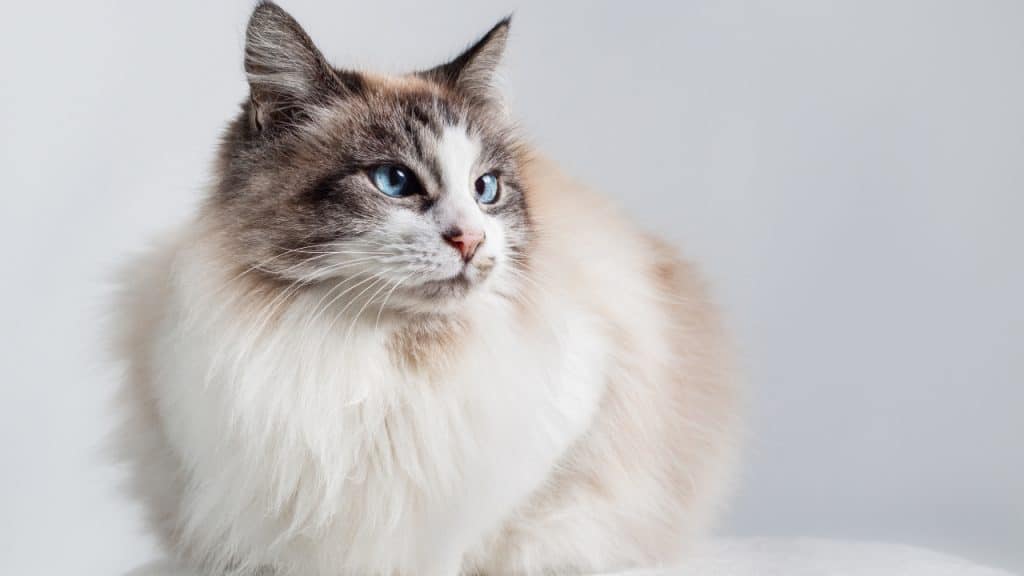
5. Bengal (↑+1)
A Bengal’s marbled coat is their most distinctive feature, but it’s also impossibly soft and possesses a muscular physique. Though all cats within the breed have different personalities, Bengals are generally active and playful in a kitten-like way, even at an older age. They need pet parents who are willing to keep them busy and entertained and who are tolerant of a cat who may need a more stimulating, enriched home to thrive.
This is because Bengals are actually considered to be a hybrid species, having been bred with non-domesticated animals. The Bengal cat breed can be traced back to Jean S. Mill, who bred a domestic cat with an Asian Leopard Cat to get a cat with a mild, affectionate temperament with the show-stopping look of a leopard. According to The Cat Fanciers’ Association, “The Bengal is the only domestic cat breed that can have rosettes like the markings on leopards, jaguars, and ocelots.”

6. Siamese (↓-1)
Perhaps one of the most distinctive breeds, Siamese cats are most often cream-coloured, with grey-brown paws and icy blue eyes. Everything about Siamese is a bit pointier than other breeds, from the large, triangular ears to their delicate paws. They’ll often have the same grey-brown colouring on their ears and faces. Siamese cats are now bred to come in different colours and patterns.
Their personalities are often busy and talkative, making them excellent companions for equally active people. They prefer to not be left alone for long periods and may need more play time than your average cat. Siamese cats are also known for being highly intelligent.
Siamese get their name from their origin country: Thailand. Before Thailand was renamed in 1939, the country was called Siam. Siamese cats eventually made their way to Europe, most notably in the late 1800s and later to North America, where Rutherford B. Hayes had a Siamese cat during his presidency, from 1877-1881.
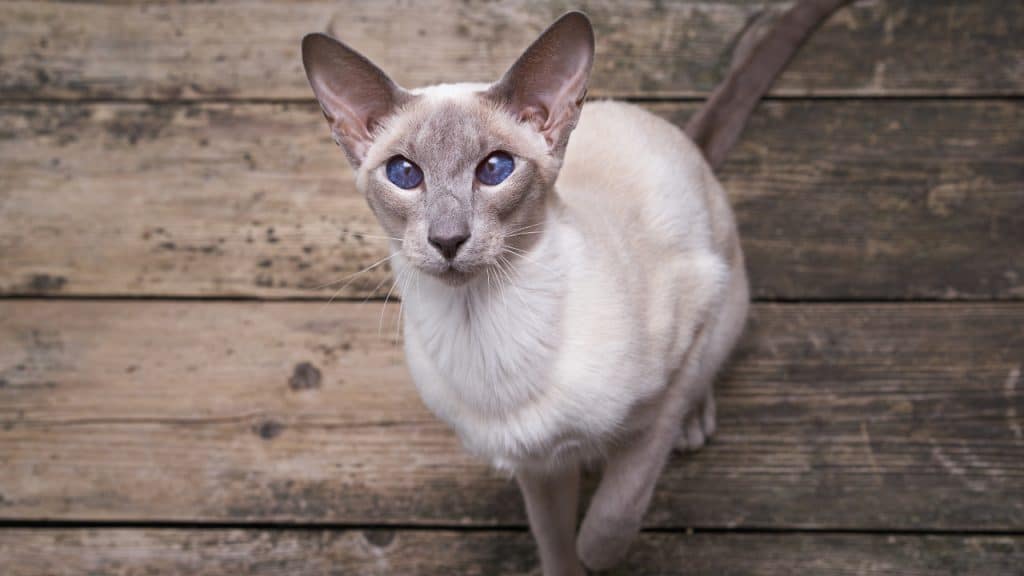
7. British Shorthair (↑+1)
Originally prized for their strength and hunting abilities, the British Shorthair is likely the oldest British cat breed. Today, they’re beloved for their round faces, big eyes, and mild temperaments.
Sturdy and densely coated, these purring teddy bears are medium to large in size and slow to mature, not reaching their full size until they’re about three years old. While most often thought of as blue in colour, British Shorthairs can come in a variety of colours and patterns.
In terms of temperament, this breed is relatively calm and quiet, not vocalizing much or loudly. However, they can be quite clumsy and don’t often enjoy being picked up. British Shorthairs are also very affectionate, get along well with other animals, and tend to form strong bonds with their favourite people.

8. Maine Coon (↓-1)
Maine Coons have relatively large bodies and sport lush, heavy coats. They’re muscular, sturdy, and simultaneously regal in stature. Their large eyes, significant paws, and high cheekbones distinguish them from other cat breeds.
When it comes to personality, these cats toe a line of wanting to be near their humans and needing their own space. They have a reputation for being undeniably attentive and may follow family members around, but like many cats, they can be cautious around new people. Unlike most other cat breeds, though, Maine Coons have a dense, water-resistant coat—they may enjoy a water fountain or even play in water!
Maine Coons are believed to be native to North America, having been put on the map during the colonial era. Some even tell a tale of Marie Antoinette having several Maine Coon-like cats, which were first brought to the continent during an expedition to save the queen from beheading. The cats made it, but she didn’t. Whether or not this story is true, Maine Coons rose to popularity for their attentive yet rugged personalities.
With the introduction of Persian cats and other long-haired breeds to North America, the Maine Coon was incorrectly declared extinct in the 1950s. Since then, Maine Coons have clawed their way back to the top, becoming the fourth most popular cat breed in Canada.
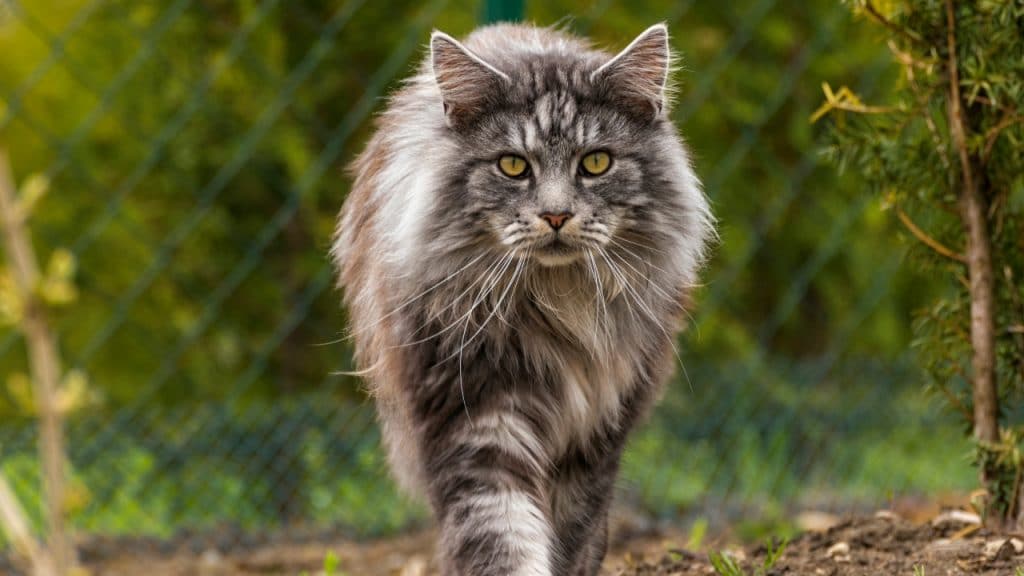
9. Persian (-)
Persian cats have stocky bodies with flat, slightly scrunched-looking faces. This is one of the qualities people are often so drawn to, but it can lead to the need for additional medical care. They sport long, soft coats that range in a variety of colours, including white and black. Though they share some physical characteristics with Maine Coons, they’re often smaller and range between 7-12 pounds.
Despite being sweet with their humans, Persian cats have a reputation for being slightly standoffish with new people and are considered generally less likely than other breeds to demand attention. They can be laid back and mellow relative to other breeds.
The Persian is one of the oldest-known breeds and was first spotted in Iran, known at the time as Persia. The breed made its debut to a wider audience in the 1871 Crystal Palace cat show and is also known as having been a favourite of Queen Victoria’s.
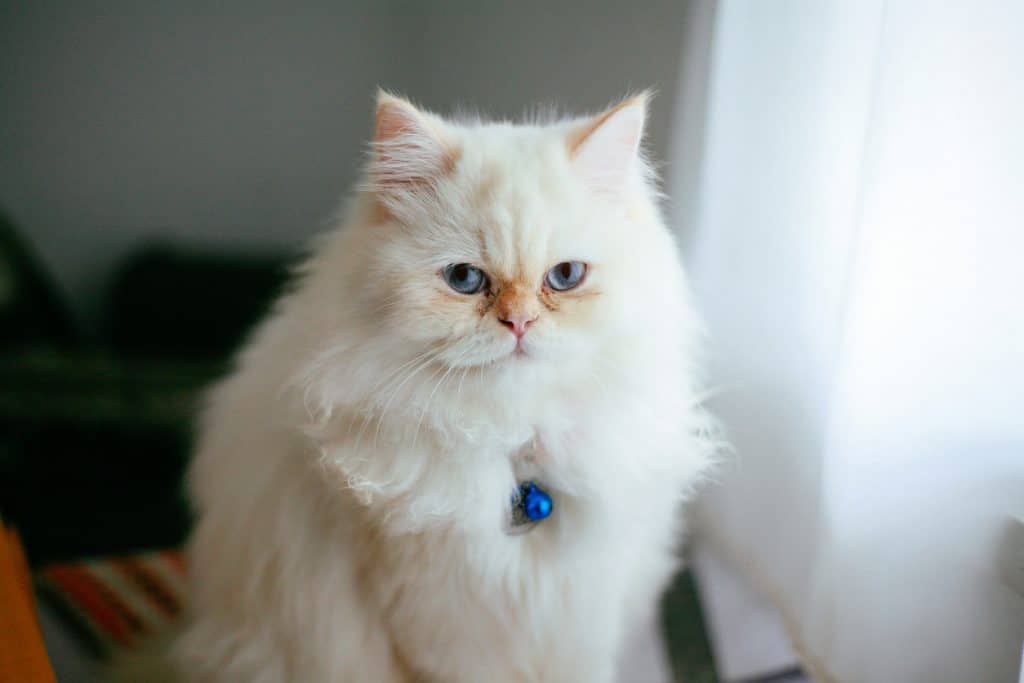
10. Russian Blue (-)
Russian Blue cats have short, soft coats in variations of dark grey and silver. They might show faint stripes but are otherwise patternless. Russian Blues have double coats, adding a plush look to their otherwise more delicate frames. They often have yellow-green eyes and a distinct “smile” on their face.
Russian Blues are often described as mostly quiet and will find a cozy place to sleep but are social with their family. They may be the type to hide away during large gatherings of other people.
Cat origin stories are heavily rumored, but some believe the Russian Blue descended from cats kept by Russian Czars. Eventually, these cats were imported to North America in the early 1900s, slowly gaining popularity over time .
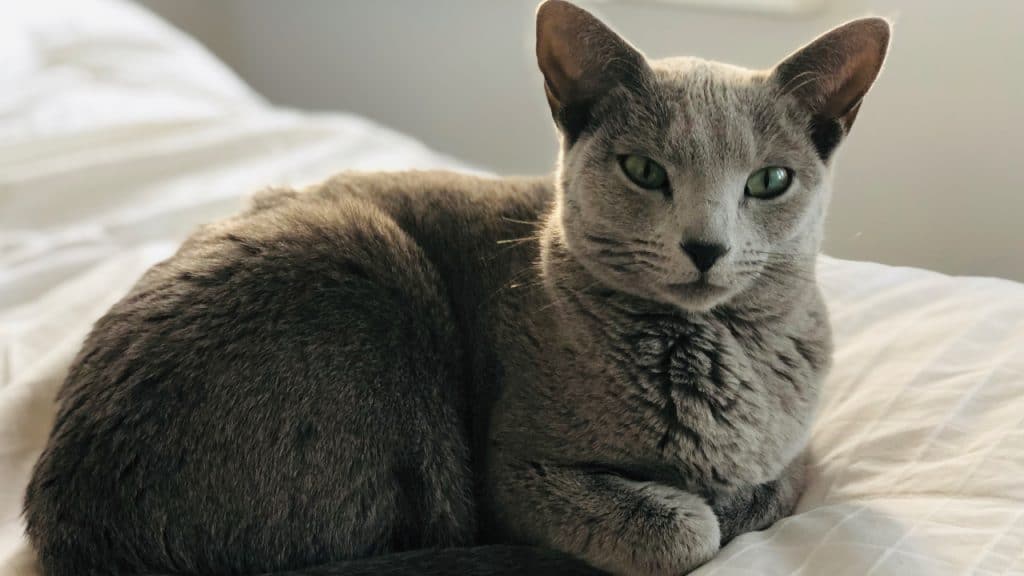
11. Siberian (-)
An ancient breed from Russia, the Siberian is a powerful, fluffy, medium-large cat that’s also known as the Siberian Forest Cat or Moscow Longhair. Having evolved to survive the harsh winters in Siberian forests, these cats are tough and have thick, triple-layered coats.
Since Siberians are a natural breed and were not intentionally bred by humans, they come in many colors and coat patterns. This genetic diversity is also why they’re so robust and generally enjoy good health.
But don’t take their exterior strength as stoicism—they’re often described as dog-like cats, both in their loyalty and affectionate, and adventurous traits. You’ll never be bored or lonely with a Siberian in your home, as they are curious, intelligent problem-solvers who’d love to follow you from room to room to see what you’re up to. Lots of enrichment and interactive play will keep this forest cat happy and healthy for the long run.

12. Bombay (-)
Bombay cats are strikingly panther-like in appearance. They were initially bred in the 1950s by crossing a domestic shorthair with a Burmese cat. American breeders wanted a cat that would take on the body type of a Burmese but with a black coat and copper eyes. Eventually, the Cat Fanciers’ Association recognized the new breed in the 1970s, and while it’s not the most common breed, it continues to have a loyal following.
Many Bombays appreciate frequent affection and playtime, making them great companions for highly engaged pet parents. Additionally, they have a reputation for being smart and easy to train. If you’re interested in training a cat to come to you or wear a cat harness so they can walk on a leash, a Bombay cat may be your vibe.
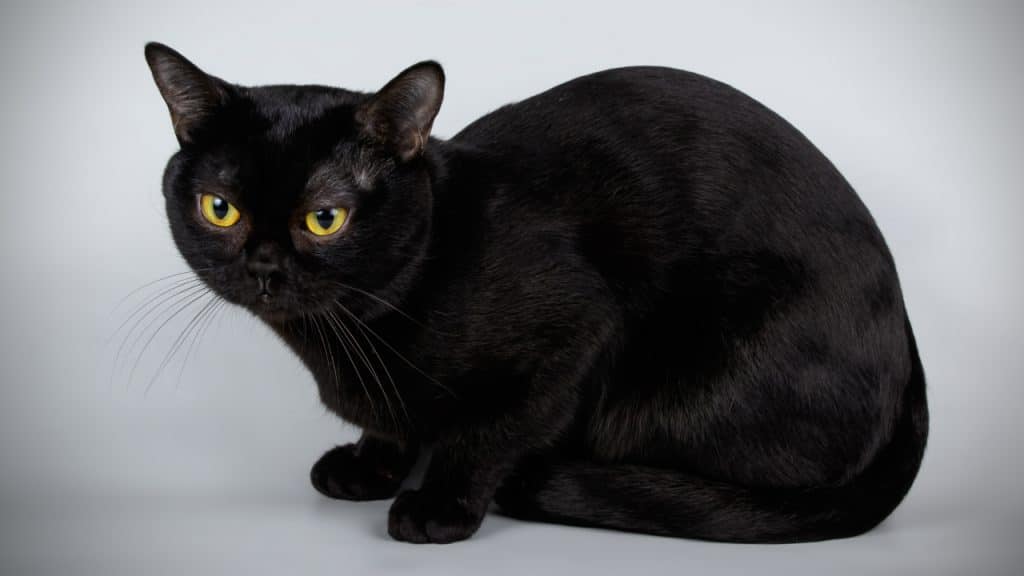
13. Abyssinian (↑+3)
Abyssinian cats are one of the oldest cat breeds in the world. They likely originated in Southeast Asia and arrived in the US in the early 1900s. Today, “Abys” are one of the most popular breeds in the Canada, known for being active, curious explorers.
Abys have short, fine coats with distinctive ticking (multiple bands of color) on each hair. They are most often cinnamon-colored, though some are blue or fawn. Their eyes are bright and almond-shaped, and their ears are large and cupped. They often look like they are standing on tiptoe, which adds to their curious vibe.
Abys are highly intelligent cats who will spend hours exploring every inch of their environment. They love to play and perch from high places in order to better observe their surroundings. Some even enjoy being put in a harness for outdoor walks and exploration. It’s no wonder these affectionate and social cats have stayed popular.

14. Sphynx (↓-1)
The Sphynx is one of the most distinctive cats on our list, both in terms of origin and appearance. This breed was born in 1966 from a spontaneous mutation in Canada, when a domestic cat gave birth to a hairless kitten. Over the last 60 years, the Sphynx has become more mainstream. Possibly due to claims of being hypoallergenic, the Sphynx has jumped up one position this year.
Although they appear hairless, Sphynx cats are classified as shorthair. Their delicate skin is covered with a layer of peach fuzz, and they are known to have a smooth, almost suede-like feel. Their oversized ears and lemon-shaped eyes add to their unique appearance.
This breed has grown in popularity over the years, possibly due to their personality on top of their unique appearance. Sphynx cats are smart, outgoing, affectionate, and vocal. They are happiest with company, so don’t be surprised if your Sphynx stays glued to your side.
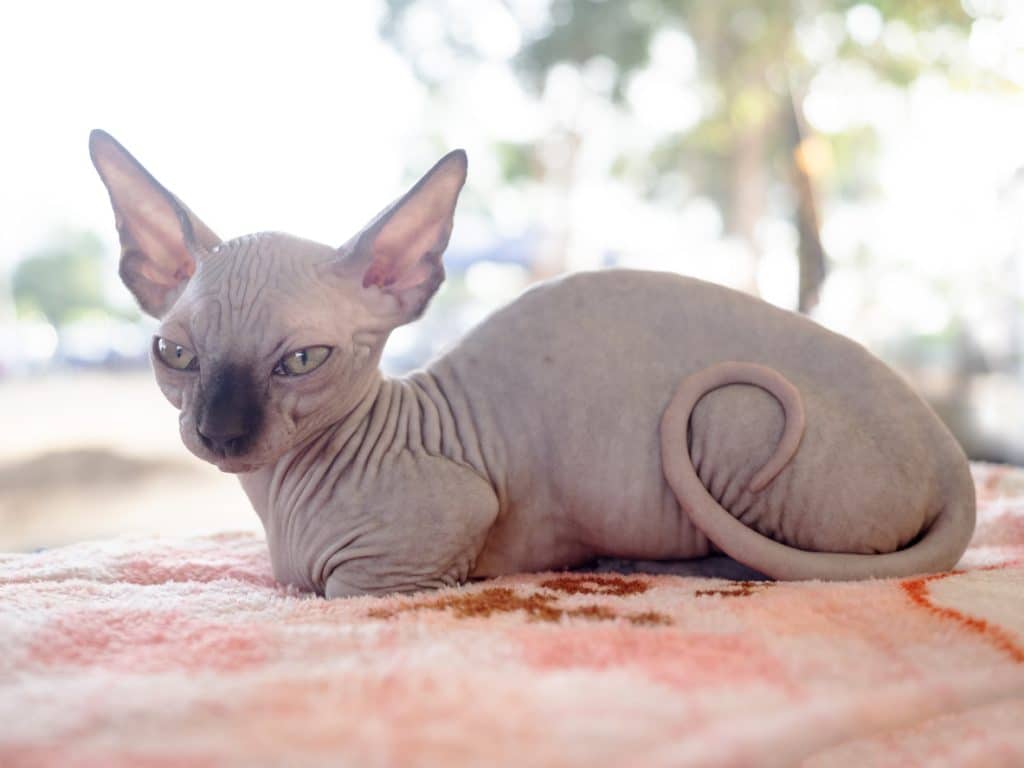
15. Scottish Fold (-)
The Scottish Fold has distinctive folded ears, a round face, and large expressive eyes. Originally discovered on a farm in 1960s’ Scotland, this breed’s lineage can be traced back to one famous Scottish Fold named Susie.
Scottish Folds have captured the hearts of Canadians and cat lovers worldwide, including Taylor Swift whose own cats are named Meredith and Olivia. As a medium-sized breed, the Scottish Fold also comes in many colors and patterns.
Known for their calm, gentle, and affectionate personalities, Scottish Folds thrive in households where they can interact with people or enjoy a quiet cozy moment. They’re smart, curious breeds who form strong bonds with their humans, often following them from room to room. When it comes to activity levels, the Scottish Fold is fairly lowkey. They may have bursts of energy but are generally content with being in your lap.

Trending Cat Breeds
Below are the cat breeds trending on Rover’s platform for 2025:
- Scottish Straight
- American Bobtail
- Oriental Shorthair
- Highlander
- Snowshoe
Rarest Cat Breeds
With a minimum of 10 cats added to the Rover platform last year, these are the rarest cat breeds of 2025:
- Colorpoint Shorthair
- Arabian Mau
- Korat
- Celtic Shorthair
- Anatolian
What is Your Cat’s Breed? Find Out Here
Interested in Rover services?
Cat Boarding | Pet Sitting | Dog Walking | Doggy Day Care | House Sitting
